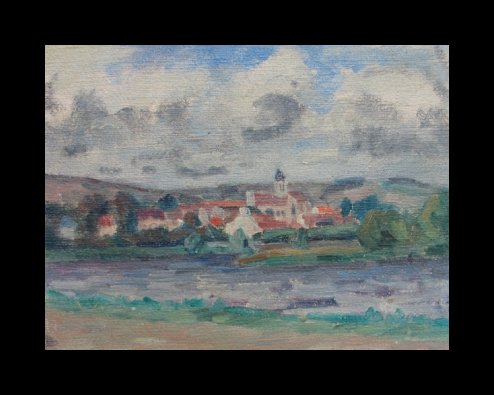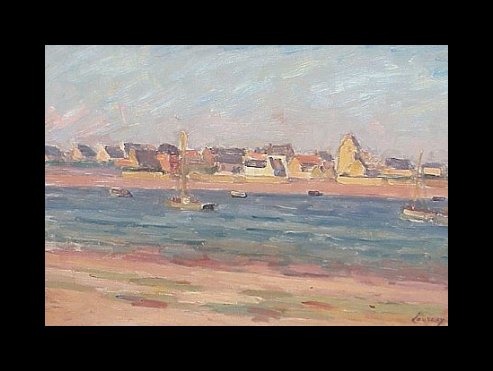Abel Lauvray (1870-1950)
Get a Lauvray Certificate of Authenticity for your painting (COA) for your Lauvray drawing.
For all your Lauvray artworks you need a Certificate of Authenticity (COA) in order to sell, to insure or to donate for a tax deduction.
Getting a Lauvray Certificate of Authenticity (COA) is easy. Just send us photos and dimensions and tell us what you know about the origin or history of your Lauvray painting or drawing.
If you want to sell your Lauvray painting or drawing use our selling services. We offer Lauvray selling help, selling advice, private treaty sales and full brokerage.
We have been authenticating Lauvray and issuing certificates of authenticity since 2002. We are recognized Lauvray experts and Lauvray certified appraisers. We issue COAs and appraisals for all Lauvray artworks.
Our Lauvray paintings and drawings authentications are accepted and respected worldwide.
Each COA is backed by in-depth research and analysis authentication reports.
The Lauvray certificates of authenticity we issue are based on solid, reliable and fully referenced art investigations, authentication research, analytical work and forensic studies.
We are available to examine your Lauvray painting or drawing anywhere in the world.
You will generally receive your certificates of authenticity and authentication report within two weeks. Some complicated cases with difficult to research Lauvray paintings or drawings take longer.
Our clients include Lauvray collectors, investors, tax authorities, insurance adjusters, appraisers, valuers, auctioneers, Federal agencies and many law firms.
We perform Abel Lauvray art authentication, appraisal, certificates of authenticity (COA), analysis, research, scientific tests, full art authentications. We will help you sell your Abel Lauvray or we will sell it for you.
Abel Lauvray is perhaps best known for his affiliation with Claude Monet. Lauvray met Monet, then his neighbor in Vetheuil, France, as a young boy in 1879. In fact, with the assistance of Lauvray’s father, Monet was able to purchase a tract of land near their homes in Giverny. This land would later be used in Monet’s famous lily pond paintings. The two retained a lifelong friendship, and it was undoubtedly Monet’s influence on Lauvray that helped him to become a talented landscape painter.

Lauvray’s earliest instruction was from Monet and later at the School of Fine Arts. While he was inspired by and looked up to Monet, Lauvray did not imitate his friend and master. While Monet became famous for his Impressionist landscapes, Lauvray chose to paint in a more realistic tone, and typically signed his work “Lauvray” on the front of his canvas. However, Lauvray did learn lighting and plein-air techniques from Monet, which would be integral in the formation of his personal style.

During his lifetime, Lauvray did not travel much outside of his beloved country settings. As a young man, he ventured to the south of France, Italy and to metropolitan French cities, but was most at home on the country banks of the Seine. However, Lauvray did venture to Greece once, and produced some 20 paintings while he was there. This was unusual as many painters during this time traveled instead to the United States or Africa, and very few ventured to the Grecian isles.

By 1906, Lauvray had begun exhibiting regularly at the Salon des Independants. He had found success at other salons from the start of his career, but did not truly begin to blossom as a painter until much later on. Lauvray never really received the acclaim that he was due, perhaps because he was so far removed from the Parisian art scene. While other artists were busy making friends and connections with art dealers, Lauvray was happy painting alone and unbothered in his rural home. As a young man, he worked just as hard as any other artists to promote himself, but after his marriage, was less concerned with gaining notoriety. Sadly, this has carried over into today, and his name still remains lesser known outside of certain art circles.

Lauvray continued to live a quiet, but successful existence as a painter with his family until 1939, when World War II was beginning to break out. Luckily, Lauvray escaped, but was removed from his home and studio until 1945. Sadly, many of his treasured items were stolen or destroyed, including numerous paintings and drawings from all stages in his career. It is not known for sure exactly what was taken, but the possibility for these paintings to exist virtually anywhere is great.
Do you think that you might own an Abel Lauvray? Contact us. We are the Abel Lauvray experts.


Reviews
1,217 global ratings
5 Star
4 Star
3 Star
2 Star
1 Star
Your evaluation is very important to us. Thank you.
